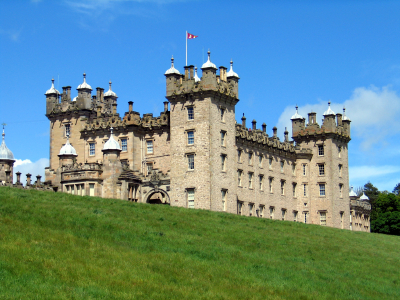Another suggested route for a shorter tour, taking in some of the most impressive castles and medieval strongholds in Southern Scotland.
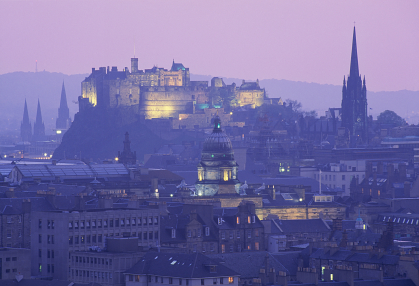
You begin your tour in Edinburgh, capital of Scotland and home to the iconic Edinburgh Castle. Anchored on ancient (extinct!) volcanic rock, this impressive Royal fortress towers 260ft above the city and dominates the landscape for miles around. The site has been occupied since around 900BC, however it was really under King David I, who ruled Scotland from 1124 – 1153, that the castle began to take shape as a fortified military base. Later in the 1460s the Stewart King James III began developing the site as a permanent home as well as a military fortress. Mary, Queen of Scots, gave birth to her son, the future King James VI, in the Castle in 1566. The Castle has been beseiged many times over the centuries, including an unsuccessful attempt by Jacobite forces during the Uprising of 1745. To this day the Castle is an active military base for the British Army. The Honours of Scotland (the Scottish “Crown Jewels”) and the Stone of Scone (or Stone of Destiny, used in the coronation of Scottish monarchs, and later English and British monarchs, for centuries) are kept on permanent display in the Crown Room of the Castle.
Leaving Edinburgh you head south east along the North Sea coast to Dirleton, a pretty village whose main square is dominated by the substantial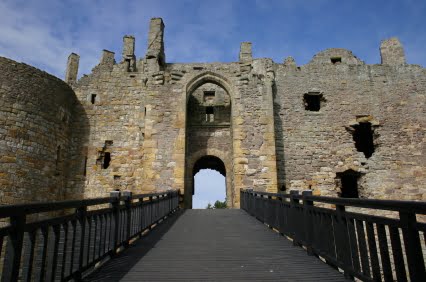 remains of Dirleton Castle. Built by nobleman John de Vaux in the late 1200s, the castle changed hands between the Scots and the English several times over the centuries due to it’s proximity to the border. The castle was finally laid waste by the forces of Oliver Cromwell in 1651. It’s circular towers are among the oldest surviving castle fragments in Scotland, and today you can see the domed dovecot (home to around 1000 nesting boxes), the chapel and the pit prison. The castle has beautiful grounds which were landscaped in the late 19th and early 20th century.
remains of Dirleton Castle. Built by nobleman John de Vaux in the late 1200s, the castle changed hands between the Scots and the English several times over the centuries due to it’s proximity to the border. The castle was finally laid waste by the forces of Oliver Cromwell in 1651. It’s circular towers are among the oldest surviving castle fragments in Scotland, and today you can see the domed dovecot (home to around 1000 nesting boxes), the chapel and the pit prison. The castle has beautiful grounds which were landscaped in the late 19th and early 20th century.
Moving a few miles south, on a rocky cliff top overlooking the North Sea you will find the impressive medieval stronghold of Tantallon Castle. Constructed in the 1350s, it is considered to be “one of the last truly great castles built in Scotland”. Ancestral home of the Douglas family (the “Red” Douglas, Earls of Angus) it towers over the North Sea with beautiful views to the Bass Rock. Again, that man Oliver Cromwell was responsible for destroying part of the castle in 1651 but thankfully much of the the huge 14th century stone curtain wall remains.
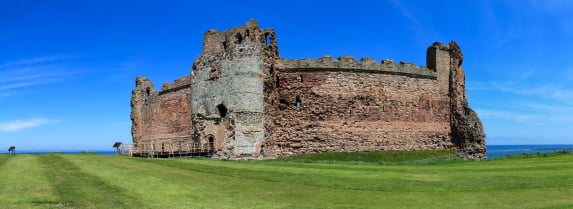
Leaving Tantallon we turn inland to Selkirkshire and Floors Castle. Quite different from the other castles mentioned so far, Floors was built in 1721 as a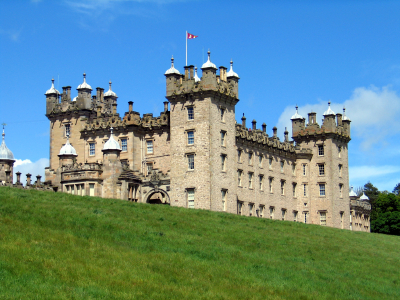 palatial home for the 1st Duke of Roxburghe. Additions to the original house were made by famous architects William Adam and later Playfair. In a beautiful setting in the town of Kelso overlooking the River Tweed, Floors boasts fairytale turrets and pinacles, as well as outstanding interiors containing a fine art collection, oriental ceramics, tapestries and antique furniture. Today it serves as the family home of the 10th Duke.
palatial home for the 1st Duke of Roxburghe. Additions to the original house were made by famous architects William Adam and later Playfair. In a beautiful setting in the town of Kelso overlooking the River Tweed, Floors boasts fairytale turrets and pinacles, as well as outstanding interiors containing a fine art collection, oriental ceramics, tapestries and antique furniture. Today it serves as the family home of the 10th Duke.
From Floors we travel back up through the Borders towards Edinburgh, where our next stop is Craigmillar Castle. Construction began here around 1400, with the central tower the oldest part of the castle. The impressive curtain wall and courtyard were added in the 1440s. Built for the Preston family, Mary Queen of Scots stayed here twice, in 1563 and again in 1566, when conspirators agreed the “Craigmillar Bond”, a plot to murder Mary’s husband, Lord Darnley. The castle changed hands in 1660 and became home to the Gilmour family. In the early 1800s, the upright skeleton of some unfortunate soul was discovered walled up in the castle’s prison. Today, you can climb up to the castle rooftops where you will find truly stunning panoramic views of the skyline of city of Edinburgh, and also Salisbury Crags, Arthurs Seat, the Firth of Forth, and the Pentland hills to the south.
Related posts
Whoops! No connected account found. Try connecting an account first.

